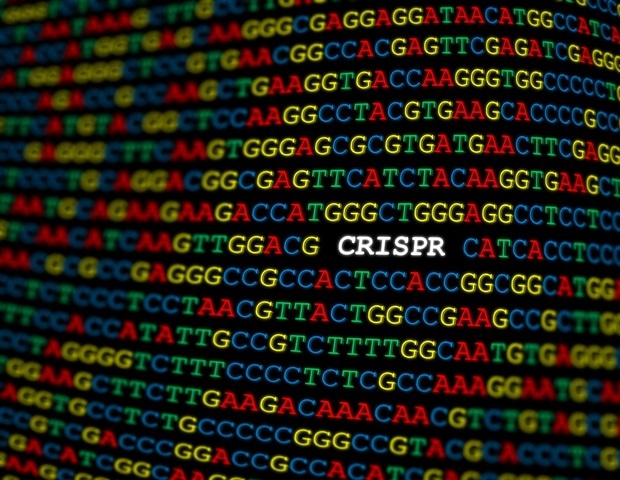Genes contain instructions for making proteins, and a central dogma of biology is that this information flows from DNA to RNA to proteins. But only two percent of the human genome actually encodes proteins; the function of the remaining 98 percent remains largely unknown.
One pressing problem in human genetics is to understand what these regions of the genome do-;if anything at all. Historically, some have even referred to these regions as “junk.”
Now, a new study in Cell finds that some noncoding RNAs are not, in fact, junk-;they are functional and play an important role in our cells, including in cancer and human development. Using CRISPR technology that targets RNA instead of DNA, researchers at New York University and the New York Genome Center searched across the genome and found nearly 800 noncoding RNAs important for the function of diverse human cells from different tissues.
“This survey of functional noncoding RNAs advances our understanding of the human genome and demonstrates the potential of CRISPR screens that specifically target RNA-;even those that don’t code for proteins,” said Neville Sanjana, associate professor of biology at NYU, associate professor of neuroscience and physiology at NYU Grossman School of Medicine, a core faculty member at New York Genome Center, and the study’s senior author.
A more precise CRISPR for RNA
The gene editing technology CRISPR has revolutionized biomedical research, with widespread applications from enhancing crop production to treating blood disorders by editing the DNA in a person’s blood cells.
Most CRISPR applications use an enzyme called Cas9 to edit genes on the DNA level. However, a newer technology uses the enzyme Cas13 to more precisely target RNA without disrupting nearby protein-coding genes and other regulatory elements. Sanjana’s lab previously demonstrated how a CRISPR-Cas13 platform targeting RNA instead of DNA can be optimized to screen the whole transcriptome, or the genetic information transcribed into RNA molecules.
Many studies have used sequencing technology to read out what RNA is expressed, but it has been challenging to understand whether specific RNA molecules actually are required for cells to function.
“We now have this technology, but the biological question still remains: which parts of the noncoding genome are actually functional?” asked Simon Müller, the co-first author of the Cell study and a postdoctoral associate in Sanjana’s lab.
Not junk after all
Using CRISPR-Cas13 to edit RNA and avoid off-target activity, the researchers systematically profiled nearly 6,200 gene pairs of long noncoding RNAs (lncRNAs) and nearby protein-coding genes across five human cell lines, including kidney, leukemia, and breast cancer cells. They used CRISPR to perturb or knock down each lncRNA to see what happens-;does the cell die, stop proliferating, or can it tolerate it?-;and determine whether the lncRNA is essential.
“With Cas13, we can specifically ask, ‘What are the functions of those transcripts?’ They are not junk-;we found that they are really important and essential to cells growing and dividing,” said Wen-Wei Liang, the co-first author of the Cell study and a postdoctoral associate in Sanjana’s lab.
The researchers identified 778 lncRNAs that are essential for cell function, including a core group of 46 lncRNAs that are universally essential and 732 with functions specific to certain cell types.
They then compared the essential lncRNAs to protein-coding genes. With the protein-coding genes, if a gene was essential in one of the five cell lines, it was likely to be essential in others. In contrast, the essential lncRNAs were more cell-type specific. The researchers were curious to know whether essential lncRNAs modulate protein-coding genes located nearby, a mechanistic question that had never been examined for noncoding RNAs. Here, they found that an overwhelming majority of essential lncRNAs operate independently of the nearest protein-coding genes.
The team also discovered that essential lncRNAs modulate key pathways for cell proliferation-;a process that is important in both human development and cancer-;and that their loss can impair the progression of cells and drive cell death. Notably, many essential lncRNAs were highly expressed across tissues early during human development and showed lower expression in the later stages, suggesting an important role for certain lncRNAs during development.
Moreover, in an analysis of roughly 9,000 tumors, the researchers found lncRNAs with altered expression in specific types of tumors, and pinpointed those lncRNAs whose expression in tumors were associated with better or worse survival in different cancers.
These noncoding RNAs may yield new biomarkers and therapeutic targets for cancer treatment, a potential opportunity for personalized medicine given their cell type-specific expression.”
Neville Sanjana, associate professor of biology at NYU, associate professor of neuroscience and physiology at NYU Grossman School of Medicine
Additional study authors include Sydney Hart, Hans-Hermann Wessels, Alejandro Méndez-Mancilla, Akash Sookdeo, Olivia Choi, Christina Caragine, Alba Corman, Lu Lu, Olena Kolumba, and Breanna Williams of NYU and the New York Genome Center. The research was supported by the National Human Genome Research Institute (DP2HG010099, R01HG012790), the National Cancer Institute (R01CA279135 and R01CA218668), the National Institute of Allergy and Infectious Diseases (R01AI176601), the Simons Foundation for Autism Research, and the MacMillan Center for the Study of the Noncoding Cancer Genome.
Source link : News-Medica

